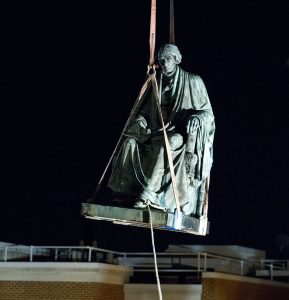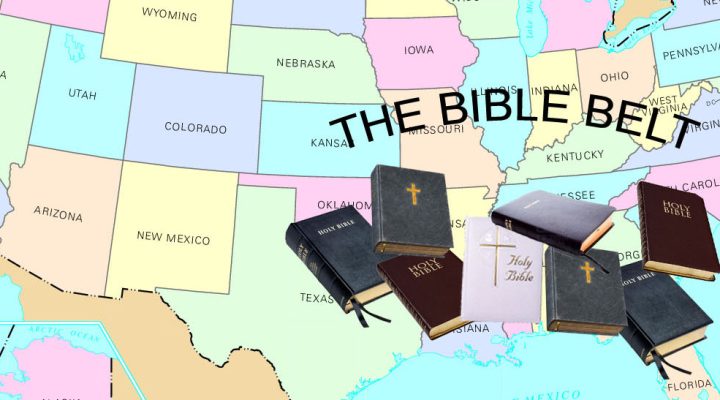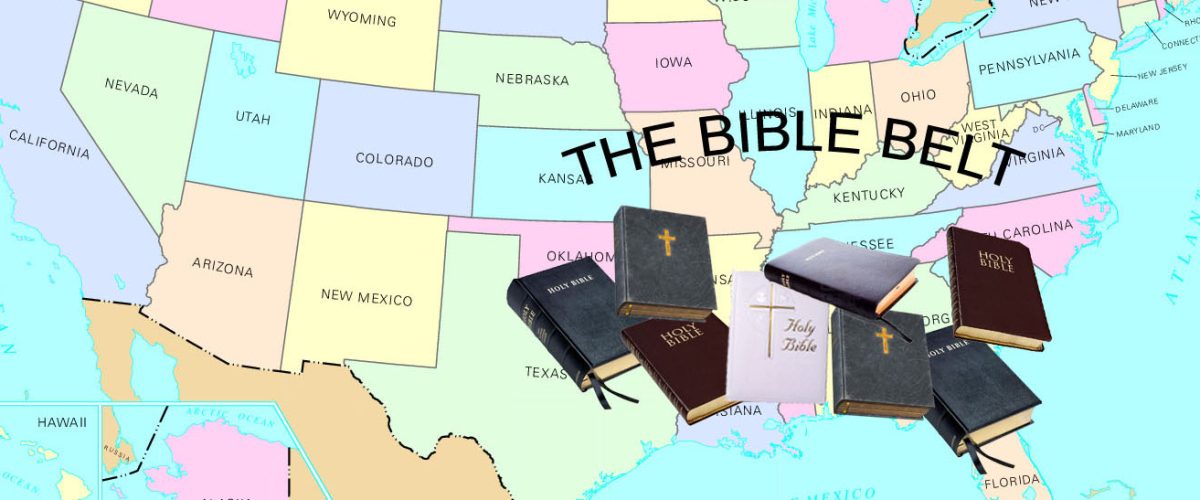I didn’t hear the term “the Bible Belt” until early in my adult years. When I asked what it meant, the response was somewhat unsatisfactory. All I got was that it had something to do with the South.
Growing up in Annapolis, Md., we knew we were part of the South. Working tobacco fields surrounding the city offered summer employment for a number of my high school classmates. The crop had been a staple since the colony was founded.
We took some pride in our Civil War history. On a single night in the early days of the conflict, citizens of the city tore up 26 miles of railroad track to Annapolis Junction where the spur joined a major north-south line. The purpose was to limit Yankee troops coming south by boat, then transferring to the railroad to join the growing Northern army in Washington, D.C.
Annapolis soon was garrisoned with federal troops. A section of the city is still called Parole. It was the site of a large camp that held captured Confederate soldiers and later where they were paroled home.

Workers use a crane to lift the monument dedicated to U.S. Supreme Court Chief Justice Roger Brooke Taney after it was removed from outside Maryland State House in Annapolis, Md., early Friday, Aug. 18, 2017. Maryland workers hauled several monuments away, days after a white nationalist rally in Charlottesville, Virginia, turned deadly. ( AP Photo/Jose Luis Magana)
If further proof is needed, consider that a statue of Maryland native Roger B. Taney, fifth chief justice of the U.S. Supreme Court, graced the statehouse lawn. He issued the majority opinion in Dred Scott v. Sandford, the ruling that African Americans were not U.S. citizens and Congress could not limit slavery in the new territories. I don’t think we thought much about that part of our heritage. It certainly was glossed over in the all-white high school history class I attended.
Then there are the old manor homes scattered about the city and the elegant mansions within, testimony of a plantation economy driven by slavery, whose culture carved our identity. It was slow in disappearing, with remnants still obvious when I was a teenager. An older friend paid his way through college collecting rent from inhabitants living in former slave quarters and shanties on his family’s large land holdings. I sometimes would accompany him. They were terrible places. It was not unusual for one or two to burn down each winter from overheated wood stoves. Back then, Annapolis was a small place, and although we lived side-by-side, it would be high school before I made my first Black friend.
I neither list these things with pride nor embarrassment. It’s just the way things were.
“It soon became apparent Maryland was not Southern enough.”
But when I began to explore what it meant to be part of the Bible Belt, it soon became apparent Maryland was not Southern enough. We were more on the periphery than warranted inclusion.
Traditionally, the Belt runs from Virginia south through North and South Carolina, on into Georgia and Northern Florida, across Tennessee, Kentucky, Arkansas, Alabama, Mississippi, Louisiana, and most of Texas and Oklahoma.
I remember an elderly deacon, pleased that the pastor of our church was moving on and glad to be shed of the modern versions of the Bible he had introduced, said, “Now we can get back to the Bible in the language Jesus spoke: The King James.” That may be as close we got to the Bible Belt.
When our nation began, the South was part of the wilderness, a place where cravings for freedom and lack of constraint could be found. People began spilling down the coast and out of the Appalachian Mountains, moving into it after the Revolutionary War. It offered cheap or free land, and distance from restrictions the Revolutionary War was fought to be free of, as well as distance from the constrains of the Anglican Church.
The South attracted a wild bunch, different from those in more settled areas along the coast. They enjoyed horse racing and liquor, and they embraced slavery.
Baptists and other evangelicals were positioned to evangelize them. More established faith groups could not turn out pastors and evangelists quickly enough. They required advanced education and seminary to become a clergyman. The early evangelicals didn’t. All a man needed was affirmation and ordination by a church to empower him to push into the wilderness and save souls, sometimes not even that.
“All a man needed was affirmation and ordination by a church to empower him to push into the wilderness and save souls, sometimes not even that.”
It didn’t go well at first. Early evangelicals preached against the evils of horse racing (and its associated betting), liquor and slavery. This was popular with women, but men stayed away in droves. Evangelicals soon learned that to reach the men they needed to modify their approach, turn a blind eye — or at least offer little more than a wink and a nod — to drinking and gambling, and embrace slavery. It wasn’t until the late 19th century with the emergence of the Women’s Temperance Movement that some of those sins were seriously addressed again.
Early Baptist and other evangelical clergymen bent theology to fit the culture, rather than challenge it. Because the majority of them were uneducated, often could barely read, and weren’t theologically trained, they despised theological thinking in favor of biblical statements often taken out of context, or in ignorance of their context.
Bill Leonard, founding dean and emeritus professor at Wake Forest University School of Divinity, said Baptists judged preaching in sweat rings, not complexity of theological thought. The faith of their congregations was subject to each pastor’s individual whims and spread to other congregations by agreement.
The growth in size and proliferation of Baptist and other evangelical churches compared with groups like Episcopalians and Presbyterians was taken as proof of the right-headedness of their Bible teaching. Simple biblical references soon became included in the culture through public and daily life, laws and traditions. That only added to the perception of the region as Bible based.
A lot has changed in the Bible Belt, and near Bible Belt, since then. In Annapolis, the tobacco fields, shanties and slave quarters are gone, replaced by an avalanche of suburbs spilling out of Washington, D.C., and Baltimore. Taney no longer graces the statehouse grounds. Multiple races mix where once there was strict delineation between Black and white neighborhoods. Rather than just one place my first Black friend and I could sit and get a Coke, now I know of no place in town that would exclude us from enjoying one together. And as one Annapolitan titled his not-so-recent book, The Train’s Done Been and Gone.
There also are great changes in the true Bible Belt. Its economy is no longer strictly agrarian. It now includes the manufacture of rockets and luxury automobiles. High-tech research areas dot the region. The flood of the sons and daughters, grandsons and granddaughters of slaves abandoning the region and pushing into the North over the decades has changed its complexion. The white sharecropper has virtually disappeared. Yet, in culture and religion, there are still vestiges of its wild, independent past.
“In spite of the proliferation of Baptist and other church-affiliated colleges, … education has been slow to influence parts of the population and their culture.”
In spite of the proliferation of Baptist and other church-affiliated colleges, now universities and seminaries, education has been slow to influence parts of the population and their culture. For them, change — or resistance to it — still comes through the whims of dominant leaders, who still measure their theology in sweat rings and are willing to bend theology to convenient belief.
While it is still appropriate to call this a richly conservative area of our nation, what most characterizes the Bible Belt today has less to do with the Bible and more to do with a culture built around picking and choosing selected verses to undergird current, popular opinion.
My old deacon would be pleased.

Bill Bangham
Bill Bangham is a retired magazine editor, photojournalist and writer who has worked in more than 70 countries. He lives in Memphis, Tenn., working on personal projects.
Related articles:
Tennessee poised to make Bible the official state book
Guess what tornadoes blow in? Racial inequality and segregation | Analysis by Marv Knox


